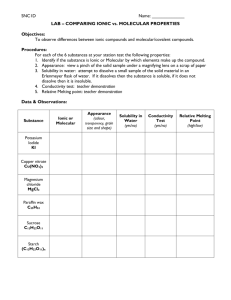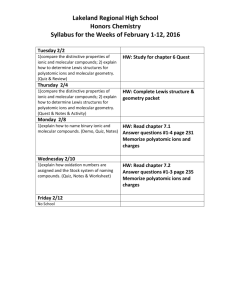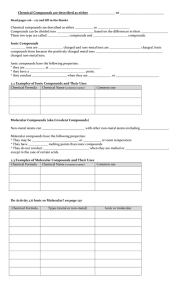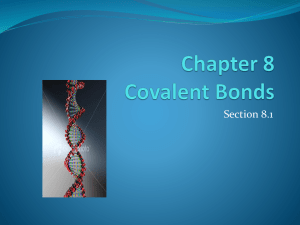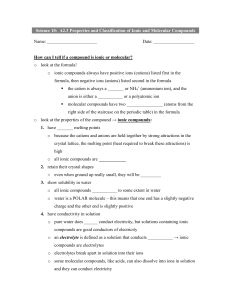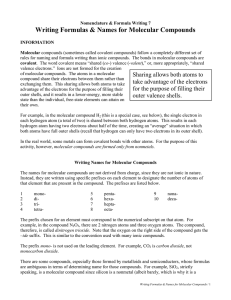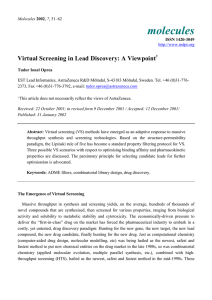CHEMISTRY 132, FALL SEMESTER, CHECK LIST FOR SECOND
advertisement
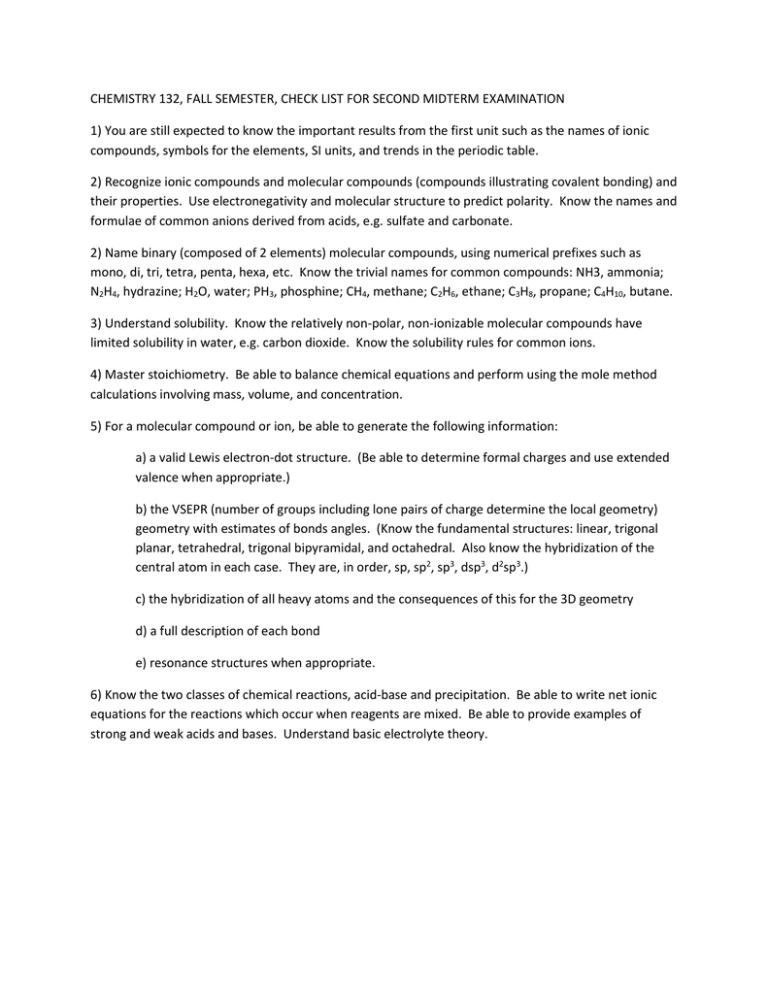
CHEMISTRY 132, FALL SEMESTER, CHECK LIST FOR SECOND MIDTERM EXAMINATION 1) You are still expected to know the important results from the first unit such as the names of ionic compounds, symbols for the elements, SI units, and trends in the periodic table. 2) Recognize ionic compounds and molecular compounds (compounds illustrating covalent bonding) and their properties. Use electronegativity and molecular structure to predict polarity. Know the names and formulae of common anions derived from acids, e.g. sulfate and carbonate. 2) Name binary (composed of 2 elements) molecular compounds, using numerical prefixes such as mono, di, tri, tetra, penta, hexa, etc. Know the trivial names for common compounds: NH3, ammonia; N2H4, hydrazine; H2O, water; PH3, phosphine; CH4, methane; C2H6, ethane; C3H8, propane; C4H10, butane. 3) Understand solubility. Know the relatively non-polar, non-ionizable molecular compounds have limited solubility in water, e.g. carbon dioxide. Know the solubility rules for common ions. 4) Master stoichiometry. Be able to balance chemical equations and perform using the mole method calculations involving mass, volume, and concentration. 5) For a molecular compound or ion, be able to generate the following information: a) a valid Lewis electron-dot structure. (Be able to determine formal charges and use extended valence when appropriate.) b) the VSEPR (number of groups including lone pairs of charge determine the local geometry) geometry with estimates of bonds angles. (Know the fundamental structures: linear, trigonal planar, tetrahedral, trigonal bipyramidal, and octahedral. Also know the hybridization of the central atom in each case. They are, in order, sp, sp2, sp3, dsp3, d2sp3.) c) the hybridization of all heavy atoms and the consequences of this for the 3D geometry d) a full description of each bond e) resonance structures when appropriate. 6) Know the two classes of chemical reactions, acid-base and precipitation. Be able to write net ionic equations for the reactions which occur when reagents are mixed. Be able to provide examples of strong and weak acids and bases. Understand basic electrolyte theory.
